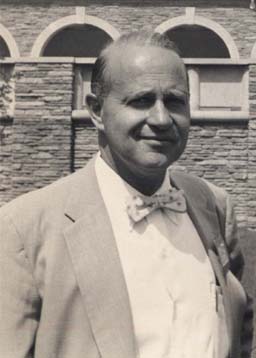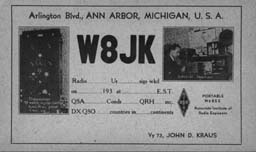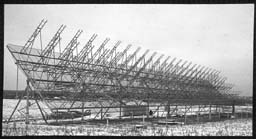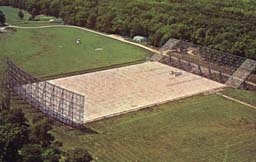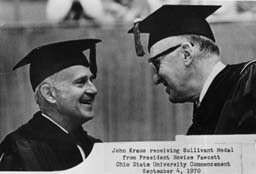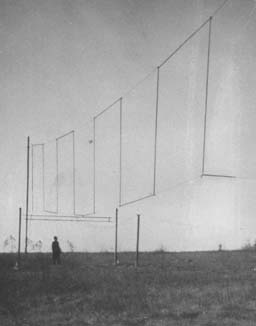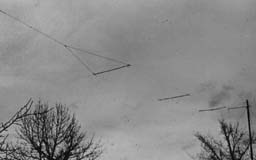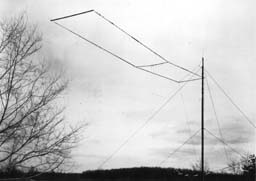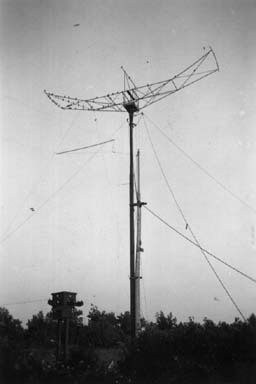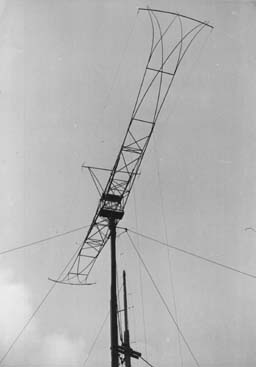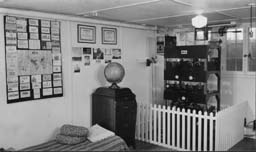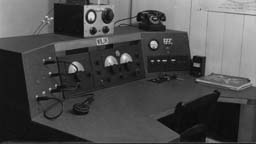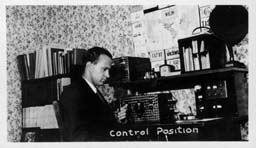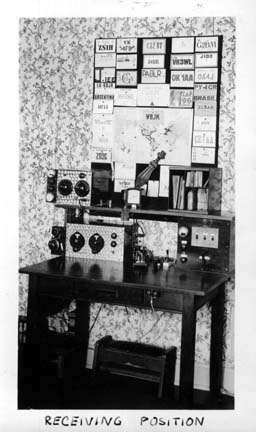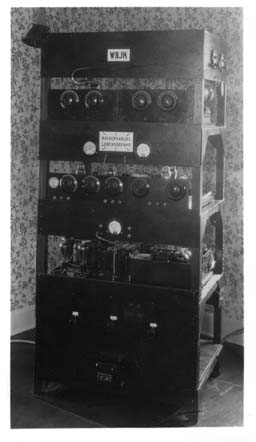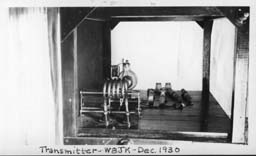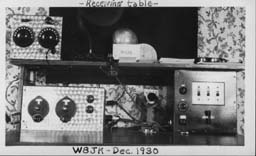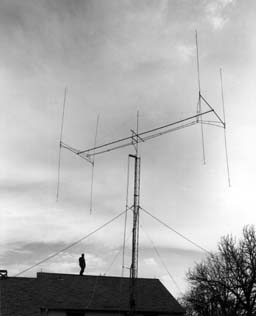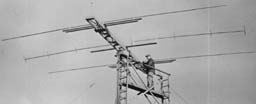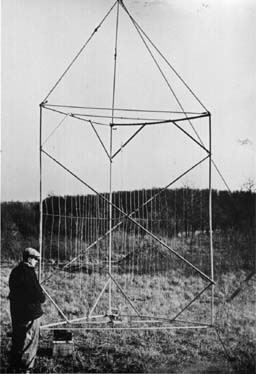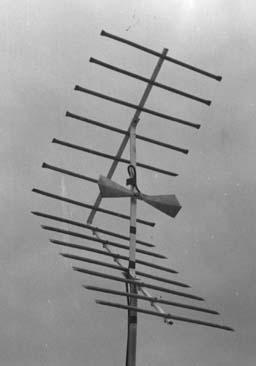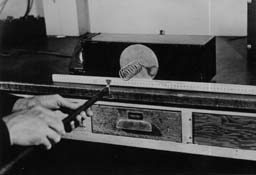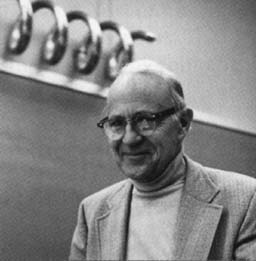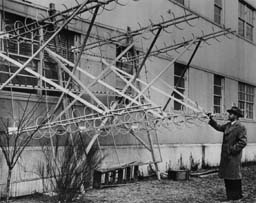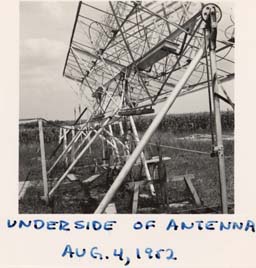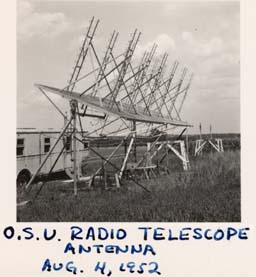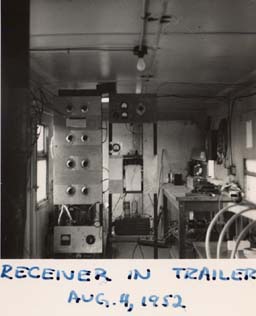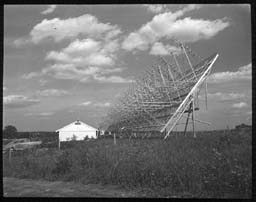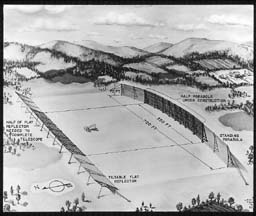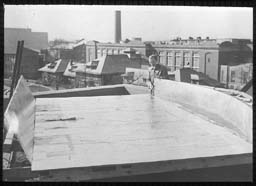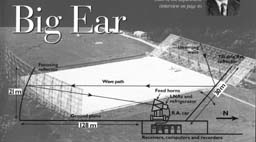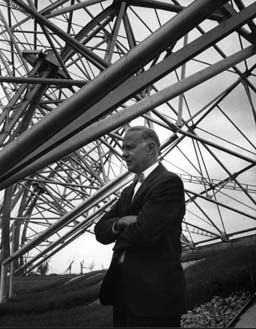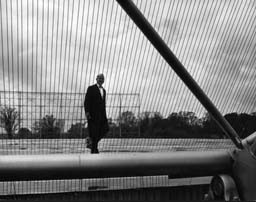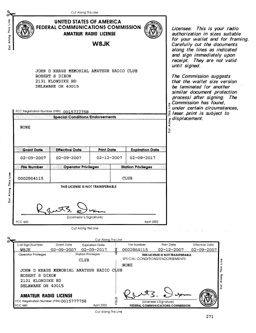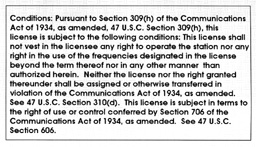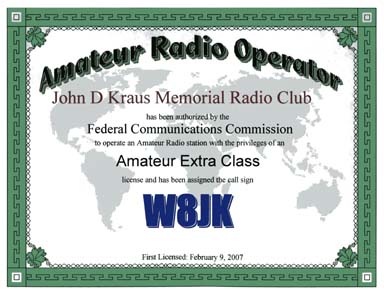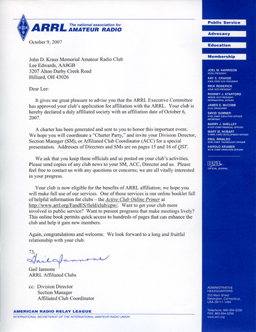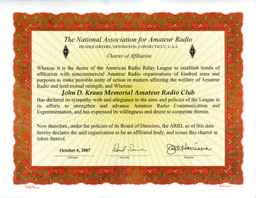![[NAAPO Logo]](../NAAPOsm.jpg)
| NAAPO (North American AstroPhysical Observatory) |
| The John D. Kraus Memorial Amateur Radio Club (W8JK)
By: Jerry Ehman |
Note: This is a historical document. The Radio Club has a dedicated website W8JK.ORG where the current QSL manager and webmaster info can be found.
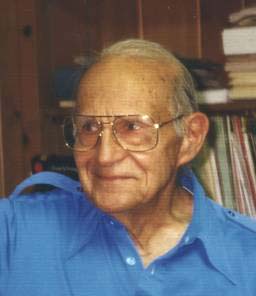
Dr. John D. Kraus
|
[Note. All images below may be viewed in a larger size by clicking on each image.]
Bookmarks (Internal Links) to Main Sections Below Introduction
During the last two months of 2006 there was discussion via both e-mail and at the regular meetings of our Radio Observatory (RO) group about the possibility of acquiring the ham radio callsign W8JK. That callsign was obtained by John Kraus (by 1930) and used until his death on July 18, 2004.
Realizing that more than two years have elapsed since the death of Dr. John D. Kraus, it was decided to investigate setting up a memorial club and to obtain the license W8JK for that club. Not only did we want to memorialize Dr. Kraus, but we also wanted the W8JK callsign so that someone who had no ties to Dr. Kraus (and who may not have even heard of him) would not obtain that calllsign.
During the discussions it was tentatively decided to form the "John D. Kraus Memorial Amateur Radio Club" in honor of Dr. Kraus. He was the Director of the Ohio State University Radio Observatory (OSURO) based in Columbus, Ohio. He designed, built, and operated the radio telescope given the nickname of "Big Ear" that was located about two miles south of the city of Delaware, Ohio (off U.S. Route 23 and just east of Perkins Observatory).
Several hams within our group looked up information about the procedures for obtaining that W8JK callsign. Near the end of this webpage, a brief version of those procedures will be given (under the subject heading of How the W8JK License Was Obtained).
Besides looking up information by some of our hams, a larger group of hams within our RO group said they wished to belong to this radio club. They include (with callsign and class within parentheses):
During the discussions about the club it was realized that actual transmissions should not occur at the site of our Argus radio telescope. There are two reasons for this. (1) Our Argus radio telescope contains sensitive receivers used to receive celestial narrowband radio signals. Ham radio transmissions nearby would cause overload and possible damage to the electronics in the Argus receivers. And (2) the location of our Argus array is on the roof of the Satellite Communication Facility (SCF = SatComm) of the Ohio State University (OSU) and we do not (and probably should not) have permission from OSU to operate a private ham radio station on university property without their permission.
Thus, Bob Dixon offered to allow the club to use his ham facility at his home in Delaware County, Ohio. Bob has been a ham since his teenage years and has a wonderful ham shack and antenna setup.
Overview
Photo of John Kraus
As a boy of 10 he was intrigued with reports that nightly broadcasts had begun from a new AM radio station WWJ in Detroit, Michigan. He read that WWJ could be received in Ann Arbor with a simple crystal receiver, so he decided to build one. After building the receiver and erecting a long-wire antenna, he clearly heard WWJ as well as several others.
About a year earlier John listened to a radio receiver for the first time. It belonged to a neighborhood friend. He heard radio amateurs (or "hams") using their spark transmitters.
After using his crystal receiver for a while, John built his first vacuum tube receiver. He was able to detect dozens of AM broadcast stations, even one from California.
John and several neighbor boys set up a telegraph system and operated it succesfully. They discovered that it could also be used as a telephone system. John listened to commercial Morse code stations and to ham radio stations in order to become more proficient at the code.
He joined the Ann Arbor High School radio club; its callsign was 8DAN and it was using a 50-watt transmitter. He filled out the necessary forms to apply for a temporary license (which required no formal examination). A few weeks later he got his license with the callsign 8AFJ. He continued to improve his receiver/transmitter system.
He graduated from Ann Arbor High School in 1926. He enrolled at the Universtiy of Michigan and majored in physics. In June 1930 he received his Bachelor of Science degree. In the fall of 1930 he entered graduate school, also at the University of Michigan, and again majored in physics. He obtained a Master of Science in 1931 and in 1933, at age 23, a Ph.D. in physics. His Ph.D. dissertation was on the propagation of ultra-short waves (a wavelength of around 5 meters).
Besides his interest in radio and physics, he also developed a keen interest in aeronautics. He joined the University of Michigan glider club.
Starting in 1933 at the University of Michigan Physics Department, he was involved with the "Norge Project" in which he was able to reduce the noise (knocking) produced by the rotary compressor in Norge refrigerators. Starting in 1936, also at the University of Michigan Physics department, he was involved in atomic particle cyclotron accelerator research.
In 1941 he married Alice Nelson and they lived in Washington, D.C., where he was a civilian scientist with the U.S. Navy responsible for "degaussing," or neutralizing, the electromagnetic fields of steel ships to make them safe from magnetic mines. He also worked on radar countermeasures at Harvard University's Radio Research Laboratory.
Mentally active and vital to the very end, he was a last living link to many of the astonishing scientific discoveries of the 20th century. He was of a bygone era of empirical and observational research and hands-on invention.
More About His Ham Radio and Antennas Activities
In 1937, after reading an article by George H. Brown entitled "Directional Antennas", John developed, for the 20-meter wavelength band, a "flat-top beam" antenna (later to be called the "8JK beam" or "W8JK beam" antenna). Two 1/2-wavelength-long horizontally-arrayed wires spaced only 1/8 wavelength apart were strung between two poles and fed at the center. This antenna was unidirectional. [See the two images below.] After confirming that the antenna worked well, John wrote an article for the west coast amateur radio magazine RADIO; the article appeared in the March 1937 issue. John got many favorable letters as a result of that article. To answer inquiries about the antenna, John wrote a second article which was published in the June 1937 issue of RADIO. He was barely able to get on the air because of the time he needed to answer the letters he received. Also, many amateurs who happened to drive near Ann Arbor, Michigan stopped by to see John's antennas and ham shack.
His next project was the construction of a flat-top beam antenna 20 meters long mounted on top of a pole 5 stories high with a motor for rotating it to point in any direction. [See the two images below.] He wrote a lengthy article with many diagrams and photographs about it which was published in the December 1937 issue of RADIO.
The above text shows how John Kraus became very involved in antenna design, construction and operation and this was to continue for the rest of his career at the Ohio State University (and beyond). I will now just mention many of the additional types of antennas that John Kraus either invented or modified as well as analyzed.
1946 and following: Professor in the Ohio State University Department of Electrical Engineering
The first image below shows the front side of the license. The second image (to the right of the first image) shows a reproduction of the Conditions as printed on the back side of the license.
Bob Dixon obtained a printed certificate from the website www.vanityhq.com; this is shown below the first two images.
Note: The club did not operate under the KD8ERD callsign because the goal was to operate under the callsign W8JK.
Lee Edwards obtained a letter and a certificate from the ARRL (American Radio Relay League) indicating that our John D. Kraus Memorial Amateur Radio Club (W8JK) is now declared "a duly affiliated society with an affiliation date of October 6, 2007". Below are images of both the letter and the certificate.
|
| [Credits: Some of the information in this webpage was found in the book "Big Ear Two - Listening for Other Worlds" by John Kraus; 1995, Cygnus-Quasar Books. The images were scanned from photos and lantern slides donated to NAAPO by Dr. John D. Kraus, Jr., eldest son of the late Dr. John D. Kraus.] |
| HOME | FEEDBACK |
|
Copyright © 2007 North American AstroPhysical Observatory (NAAPO) Designed by Jerry Ehman Last modified: October 22, 2007 |
